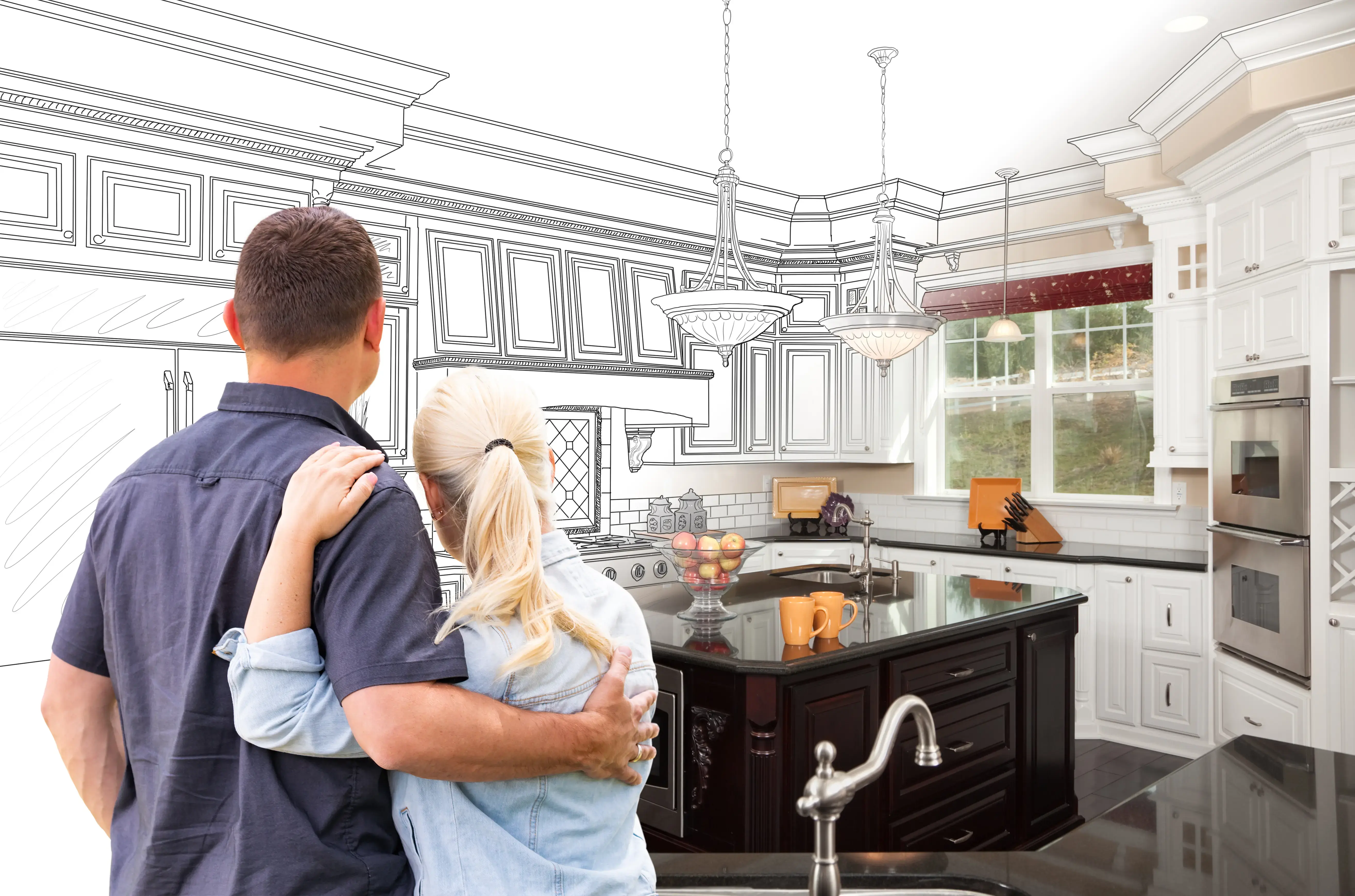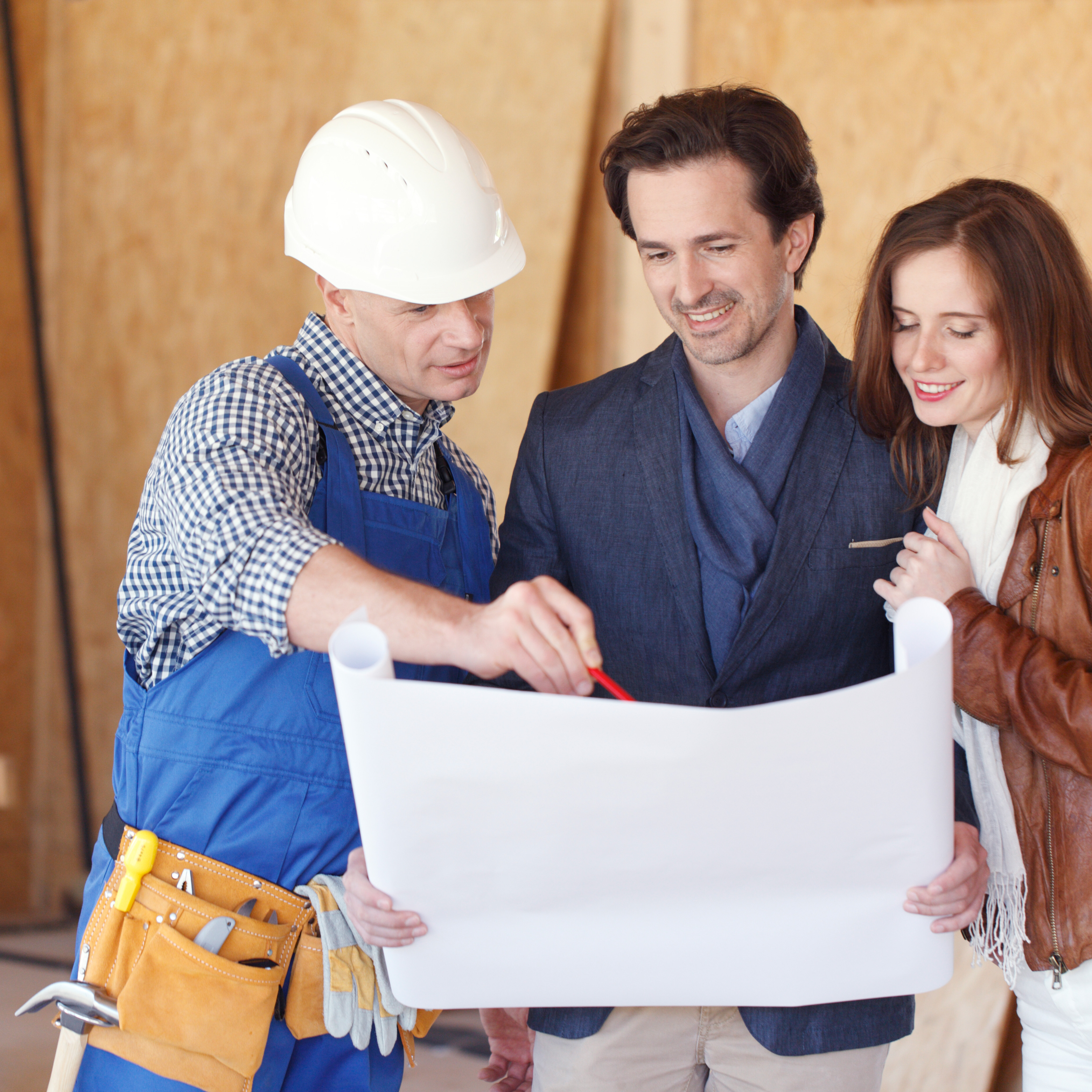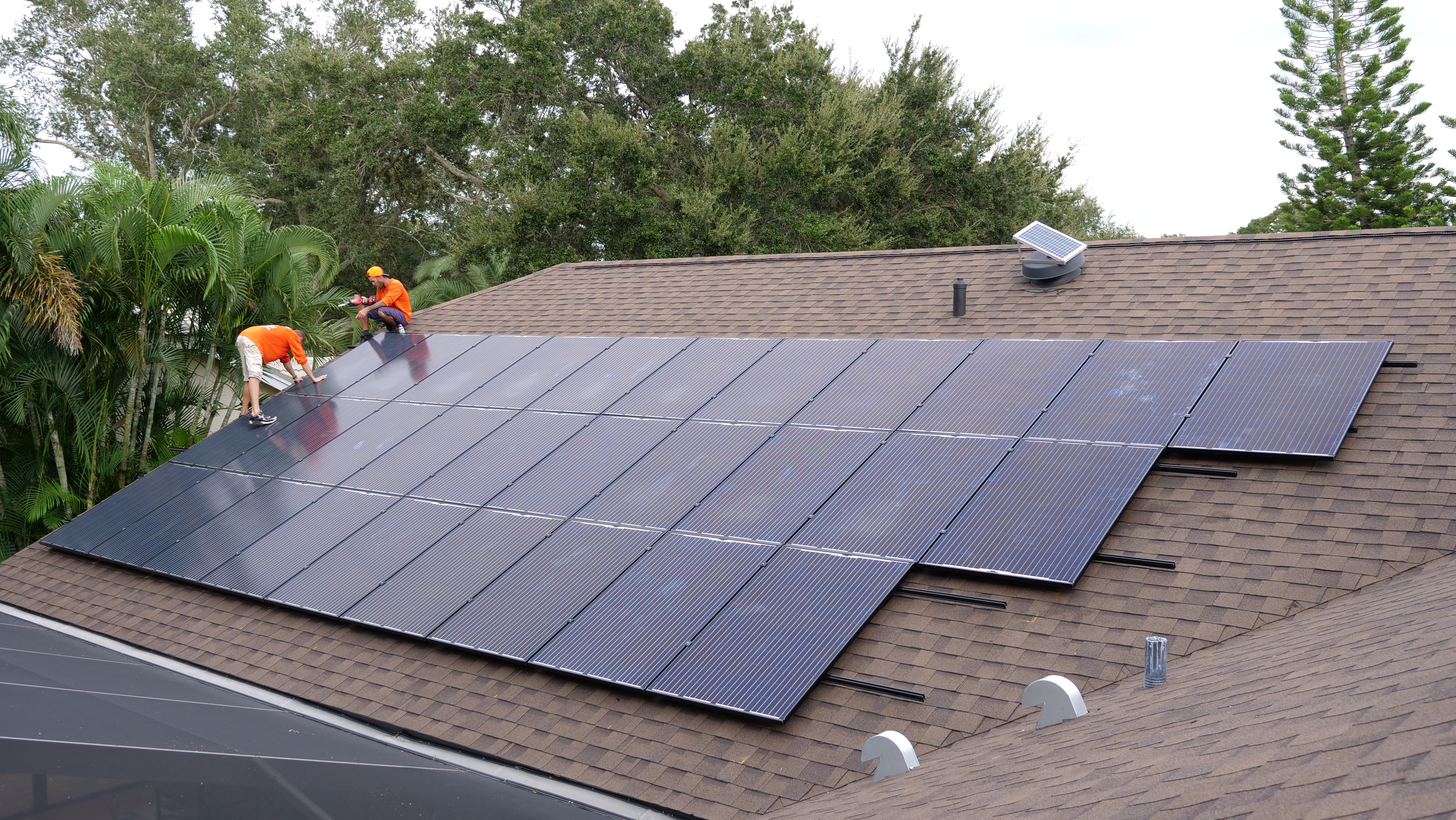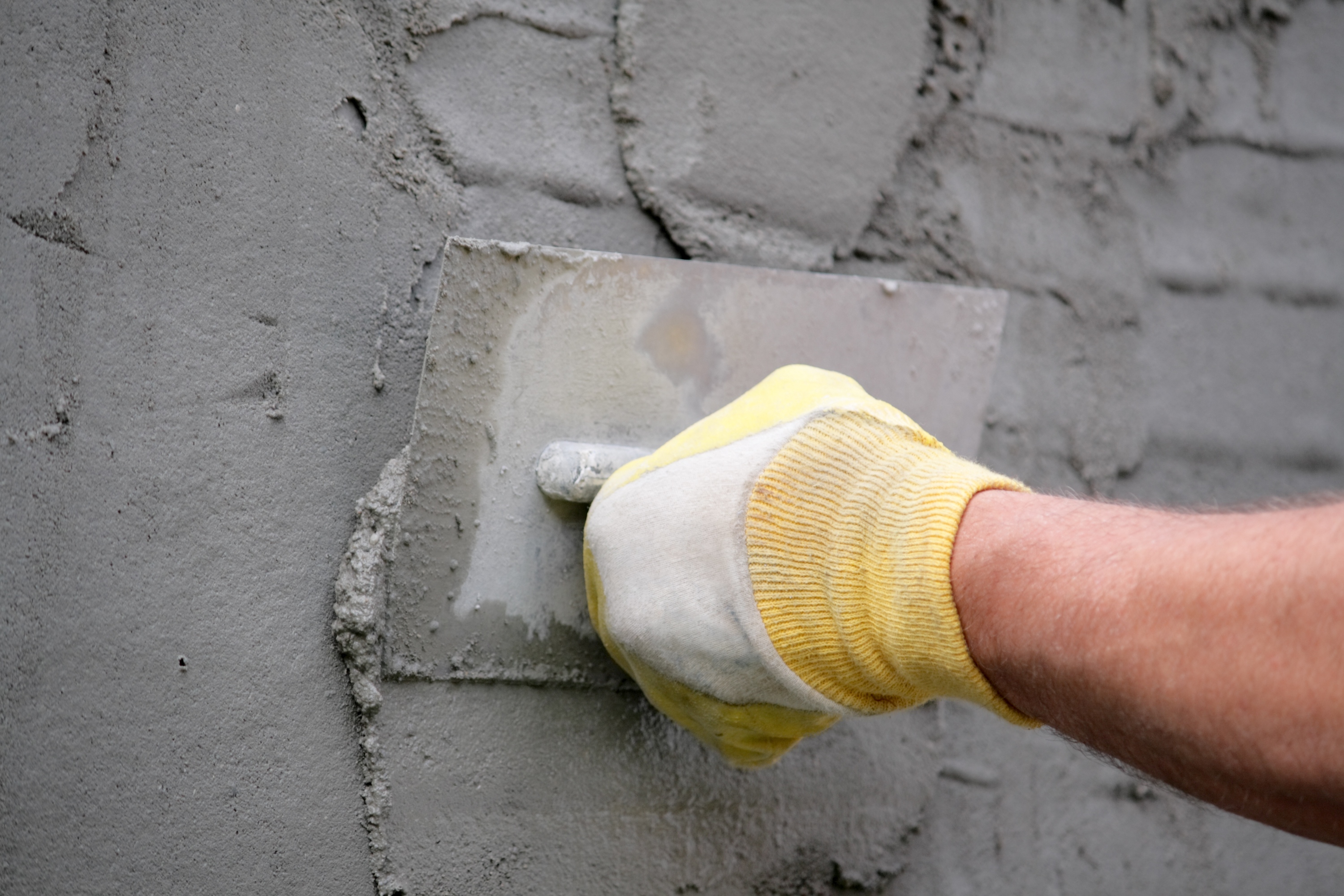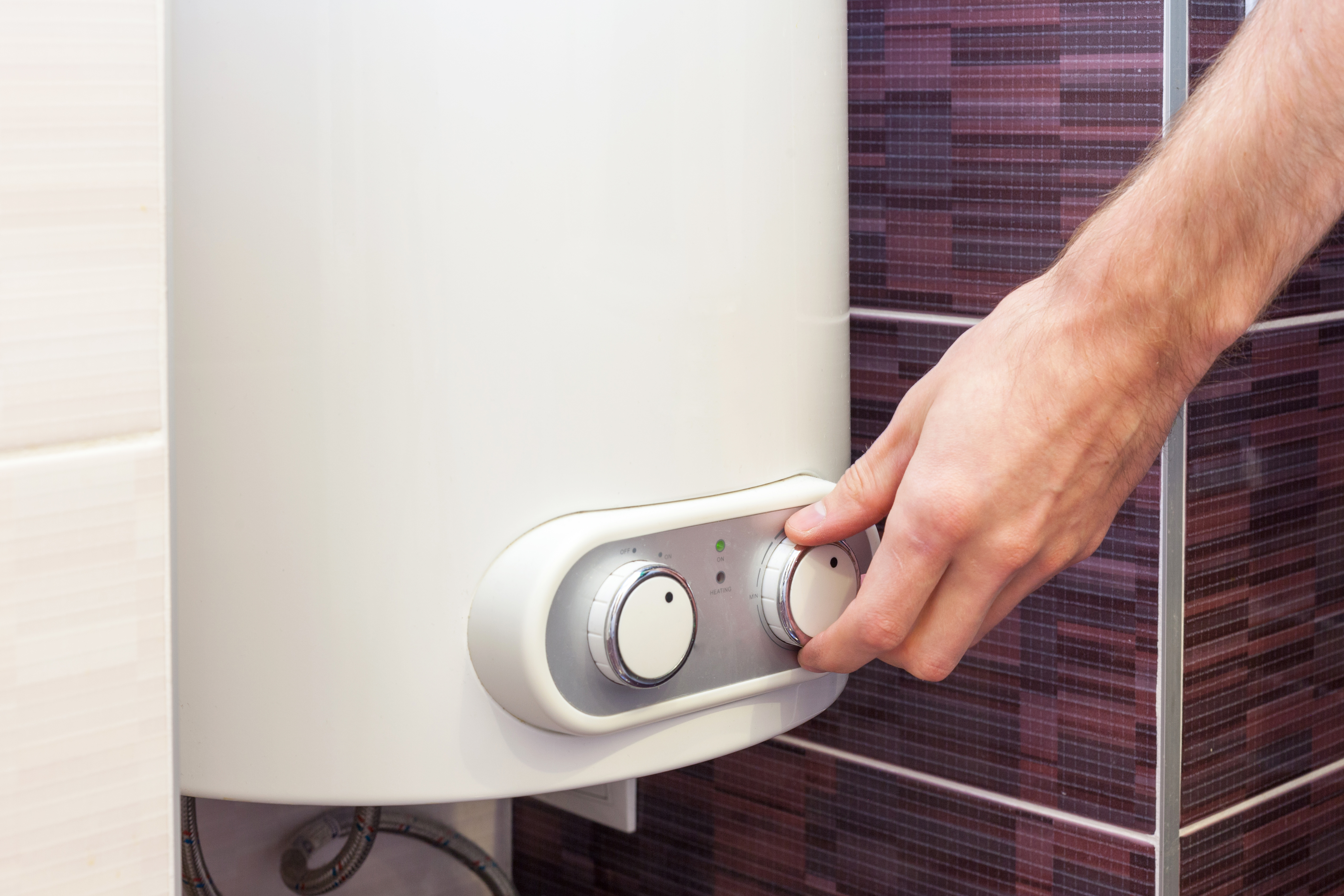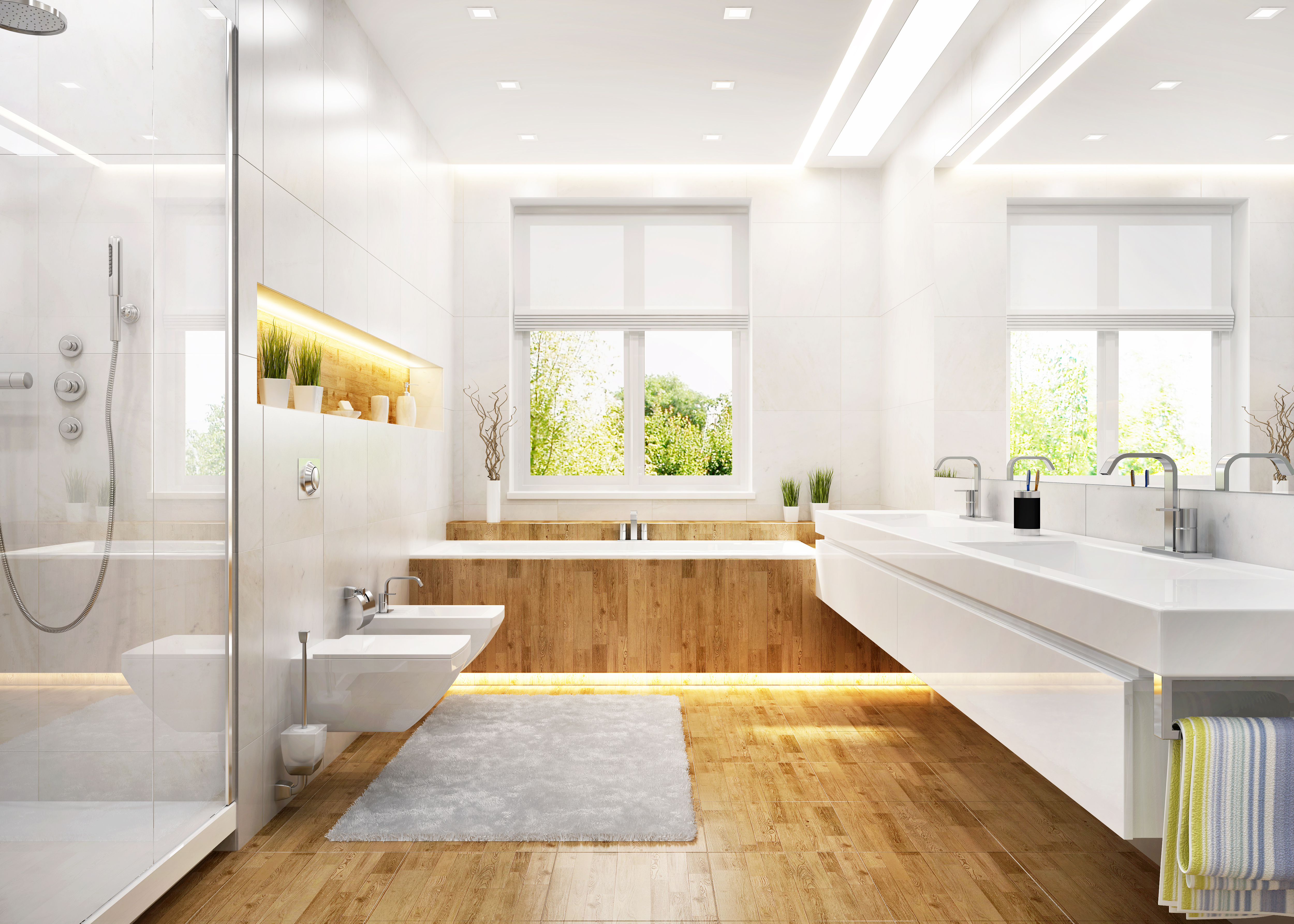Eco-friendliness and energy efficiency are important factors for today's environmentally-conscious home buyer. This article by The Simple Dollar offers 14 sensible ways to create a cost- and energy-efficient dream home. To find out how Panasonic solar panels and home battery systems can help you do the same, click here.
A frequent reader of The Simple Dollar named Jim recently shared a really thought-provoking question about building a home:
A recent question about LED bulbs made me wonder – if you were buying a new house, or building it, what materials or features would you include "from the ground up" to maximize saving money? LED light bulbs, solar panels (depending on location), presence of ceiling fans in every room, efficient washer/dryer – what else would you add?
First of all, we need to make some assumptions about the question.
- This is a home you'll stay in for a long time. You should be building this house with the intent of living there for at least 20 years, and probably a lot more than that. If you're not, a lot of these up-front investments don't make a whole lot of sense. If you intend to move in 10 years, investing in something that won't pay off in 10 years isn't a good idea.
- You're paying more to build things correctly to avoid maintenance and repairs down the road. No one wants to deal with a flood of problems in 10 years that destroys a budget. Any issues and problems should be from normal wear and tear – like resealing window caulk or maintenance after a storm.
- DIY is fine on some projects, but most of the big projects are going to be left to a pro. Professionals know what they're doing, and that's why you're paying them. Some home improvement and building projects are best left to someone with the expertise to execute it correctly.
14 ways to create a cost- and energy-efficient dream home
Communicate with your builder and contractors
Before you sign on with any builder or bring on contractors, communicate effectively about your vision for the house. Make it clear what your goals are – long-lasting materials, low maintenance and energy efficiency. You'd rather invest in those types of things upfront than pay for them later in the form of energy bills, maintenance, repairs and replacements.
This provides a clear baseline for most of the rest of your requests during the build and ensures that your builders and contractors understand exactly what you want out of your new home.
Install a robust solar system
If your home is in a location where it receives sunlight throughout the day and you're building from scratch, I would recommend the installation of a robust solar system. Because there's a large number of solar installers across the country, my suggestion for finding one is to simply ask around your social network, ask your contractor and look for online references for solar installers.
The benefit of solar panels is that they provide a renewable source of energy for your home. A good solar panel installation draws substantially more power during the day (particularly sunny days) than your home can use, with the excess going to charge batteries and then whatever's leftover going out into the power grid. Most energy companies will pay a small amount – about 3 or 4 cents per kWh – for any excess energy you provide. During cloudy days and at night, your home runs off of batteries. If that's not enough, it pulls from the electrical grid. The end result is that if you install adequate solar panels and batteries, the energy company will pay you every month. Solar panel installations are also partially tax-deductible via the investment tax credit for solar power, and many states offer credits and deductions.
Solar systems have a high up-front cost, but they pay you back in the form of much lower energy bills. Often, you'll find the energy company is paying you and you have no bills at all. The break-even on most solar systems is around 10 years, depending on the area, with that number being reduced if you can take advantage of tax credits and deductions.
Install geothermal heating and cooling
Another step to take to minimize the ongoing energy cost of your home is to install a geothermal heating and cooling system, which is another source of renewable energy. A geothermal system pumps water through pipes into the ground below your home or other parts of your land, then brings it back up. In the summer, the water heats up as it cools off your house and is pumped underground to cool off; in the winter, the reverse is true: the water cools off as it heats up your house and is pumped underground to warm up. This radically cuts your energy costs for heating and cooling because much of the energy effectively comes out of the ground on your property.
Combined with solar panels, you can actually heat or cool your home in extreme temperatures entirely via renewable energy, even generating a surplus of energy.
Again, as with solar panels, there is a significant up-front cost for this type of system, but it pays off over the long run (around 10 years for most systems). The federal government offers a tax credit for geothermal systems, and many states offer a credit or deduction for such systems. This reduces the overall initial cost for you, moving the break-even point for this investment much earlier.
Position windows for solar tempering and maximize natural lighting
Solar tempering is another strategy to aid in the heating and cooling of your home. It involves positioning windows on the south side of your home such that sun shines in them in the winter (adding heat to your home) but they're shaded in the summer (so that they don't provide heat). This involves positioning windows under the overhang of your roof, calculated with the angles of the sun during summer and winter. Windows beneath an overhang on the south side will have sunshine in them in the winter but are shaded in the summer.
You'll want to install windows on the south side of your home that have a higher solar heat gain coefficient, which means that they allow heat through when there is direct sunlight on them. This is great in the winter and bad in the summer, but you're positioning them such that they have direct sunlight in the winter and little to none in the summer.
This is more about the design of your home rather than anything else, other than the consideration of buying windows with a high solar heat gain coefficient on the south side.
Use external and internal sealants
This is something that should be emphasized with your home builder. For a more energy-efficient home, you'll want your home air sealed well, both on the outside and the inside, during the building process. Ensure that the builder is applying both to your home and that it is being done thoroughly. Paying a little more to make sure that this is done well will pay off tremendously over the long run.
The reason for this is that you're minimizing the amount of airflow in and out of your home. Air leaks cause the internal and external temperature of your home to balance out. This isn't a big deal in the spring and fall, but during periods of extreme weather, where the difference between the temperature in your house and the outside temperature is massive, air leaks make a tremendous difference. You should start off your new home construction with as little leakage as possible, ideally none at all.
Use high-grade insulation, defaulting to a higher R-value, including on doors and windows
While air sealing protects you against the actual flow of air into and out of your home, insulation protects against heat that transmits directly through the walls and ceilings of your home. In general, the higher the R-value of insulation, the more expensive it is, but the better it will serve to keep your home at whatever internal temperature you desire, regardless of the outside temperature. Insulation keeps the interior of your home warm in the winter by keeping the heat in, and keeps it cool in the summer by keeping the heat out.
This becomes more of an important factor if you're in climates where the temperature regularly varies widely from what you ideally want your indoor temperature to be. In hot southern climates, insulation helps by keeping the cool air in; in cold northern climates, it keeps the warm air in. In the middle of the country, particularly in coastal areas, the temperature range is less extreme, so insulation is less of a factor.
In particular, make sure that the attic is well insulated with a high R-value insulation in northern climates, as heat rises and will rise right out of your roof if it's not well insulated. Have you seen homes that, on snowy days, have all of the snow melted off of the roof? That's a sure sign that the home is losing a lot of heat through the roof; that not only costs in terms of energy bills, but it can also be hard on the roof.
Invest in a slate or concrete roof
Slate or concrete roof tiling is more expensive than other forms of roof tiling, but if you live in a home for 20 or more years, you'll likely end up replacing the roof at least once anyway, which will end up with a total cost higher than simply going with slate or concrete tiling from the start.
This is purely a long term savings and low-maintenance choice. It definitely costs more upfront, and if you're not going to live in a home long enough to have to consider replacing the roof, there's no reason not to go with less expensive shingles. However, if you intend to live there for many years, a better roof will have far fewer issues and will likely last for the rest of your life.
Use brick, stone or stucco external siding with fiber cement trim
These materials are all about longevity and, to a lesser extent, additional insulation. They have a higher upfront cost, but, again, if you live in a home for more than 20 years, you'll probably end up replacing the initial vinyl siding on your home, which means that you've completely lost any initial savings from installing vinyl over other external siding options.
The same logic goes with the fiber cement trim. Other options require maintenance and will eventually need replacement over a multi-decade timeframe, so simply go with a somewhat more expensive material that won't likely need replacement in your lifetime.
Invest in fiberglass doors with good insulation and windows with a simple opening and closing mechanism.
When you're choosing external doors and windows, the best choice for a long-lasting door is a fiberglass door with good insulation, as it will help with heating and cooling and last for an absurdly long time, likely longer than your lifetime.
For your windows, insulation is also important, but make sure that the windows you choose are designed with a very simple opening and closing mechanism. The more complex the mechanism, particularly if the mechanism is embedded in the frame or trim, the more likely you are to run into problems later. Such systems work great when they work, but are frustrating when they don't.
Use a heat pump water heater in warmer areas or multiple electric water heaters in cooler areas
Heat pump water heaters are a great choice for an energy-efficient water heater in warm climates. If you live in an area where the outside is warmer than you want your home to be for a large portion of the year, a heat pump water heater is a great choice. It operates by utilizing geothermal energy directly to heat the water.
Obviously, that doesn't work quite as well in colder periods – it does work, just not quite as well. Thus, in colder climates, particularly if you're using renewable energy sources like solar panels, the best option is to have a large electric water heater or multiple electric water heaters, depending on the size of your home. These heat water directly via electricity – think of a toaster or electric oven or electric stovetop heating up water, but doing it very efficiently. They are very good at heating up a small amount of water quickly but tend to struggle if there's a lot of water use like two people simultaneously showering while the dishwasher is running. If you will have several people living in your home, consider setting up multiple water heaters divided amongst different parts of your home.
Use aluminum or composite material for decking or porches
This falls under the "long-lasting materials so you don't have to replace it eventually" category that comes with building a home that you intend to live in for the rest of your life. If you build your porches or decks out of aluminum or composite material, they're going to last for far, far longer than if you build them out of wood or other materials, and they're going to require far less upkeep.
A deck built of wood is far less expensive upfront, but you're going to have to invest in sealing the deck annually and likely staining it some years. Even then, it will eventually wear out and need to be replaced in 15 to 20 years. Over the course of 20 years, the two wood decks with annual sealing and occasional staining will cost more than the initial cost of a composite or aluminum deck and will have involved far more maintenance time.
Install energy-efficient appliances everywhere
I'm really not going to get in the business of recommending specific appliances here, because the recommendations will change frequently. Instead, here are some principles to follow when buying.
First, every appliance you buy should be energy efficient. It should at least be EnergyStar compliant. Second, when buying appliances, I strongly encourage people to look at Consumer Reports and follow its recommendations. Look particularly at energy efficiency and reliability ratings, as well as overall recommendations.
Third, don't spend extra money on features that you're not sure you'll use. Appliances come with all kinds of features that sound really cool, but will you actually use them? The more additional features you have, the more failure points you introduce into the appliance. Simpler is almost always better.
Remember, reliability and energy efficiency are what you're looking for, not esoteric "cool" features.
Have a ceiling fan in every room larger than a closet
Ceiling fans help a ton when it comes to keeping a stable temperature in your home and reducing how much you need to run the larger heating and cooling systems in your home. Ceiling fans keep a higher thermostat temperature in the summer and a lower thermostat temperature in the winter, and you should have them in as many rooms as possible.
Ceiling fans move air across your skin in the summer, creating a cooling effect. In the winter, you set the blades to run the other way (by flipping a switch on the fan), then the air moves upward, making it feel pretty still in the middle of the room but pushing down the warm air that collects at the top of the room. It works incredibly well, for very little energy cost. What happens with consistent usage throughout the house is that the temperature stays stable for longer, but it feels a bit warmer in the winter than it actually is and feels a bit cooler in the summer than it actually is. This lets you keep your thermostat a few degrees higher in the summer and a few lower in the winter, which means that, for multiple reasons, your big heating and cooling systems run less.
Put them everywhere. Use them. You'll be glad you did.
Use LED bulbs, but plan ahead for your lighting
Obviously, LED bulbs in every socket in your home is a great idea for saving energy on lighting, but as you're designing the home, think about the lighting carefully.
A well-designed home makes maximum use of ambient lighting during the day so that there's less need to have the lights on during daytime hours. Consider where in your home you'll really need task lighting (brighter, so you can see details clearly) and where you'll need ambient lighting. You simply won't need as many sockets in ambient areas, which will permanently save energy.
Consider installing motion sensors or timers in rooms that you're rarely in, such that the light comes on when you go in and turns off when it doesn't detect motion for ten minutes. That way, a forgotten bulb won't gulp down energy for days. For outdoor areas, consider using motion sensor lighting for much of your yard lighting, so that it doesn't stay on when you're not outside.
Too long, didn't read?
Remember, in each case, we're relying on the fact that you want to live in this home for more than 20 years. If that's the case, then using some, if not all, of these strategies when building or upgrading your home will create a cost-efficient house that can serve you well when it comes to bills and maintenance. Remember, however, that the large expense up front will pay off as long as you stay in the house for a long, long time.
This article was written by Trent Hamm from The Simple Dollar and was legally licensed through the Industry Dive publisher network. Please direct all licensing questions to legal@industrydive.com.
